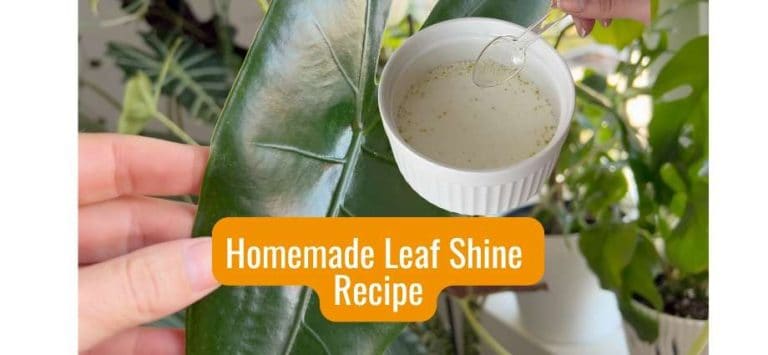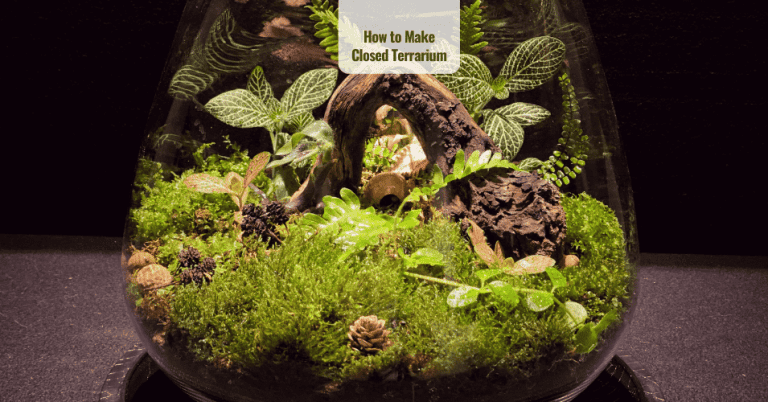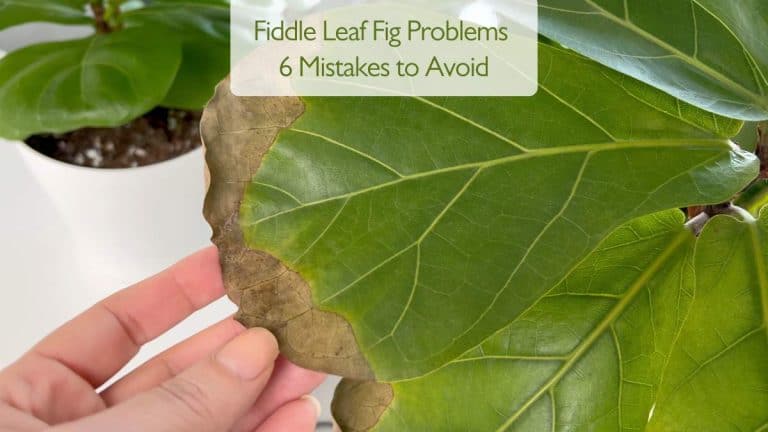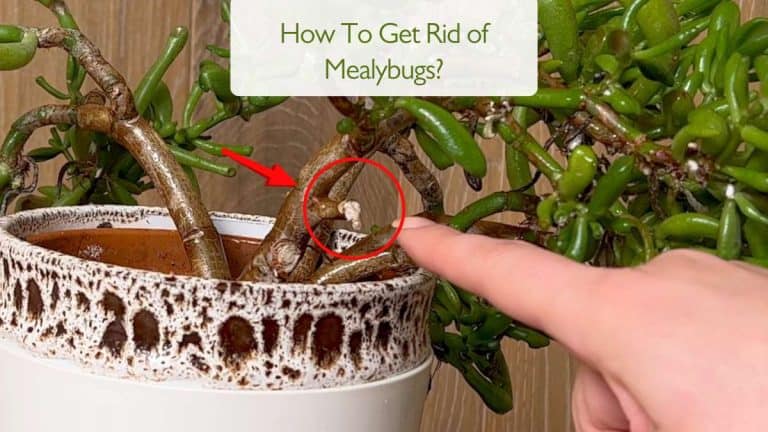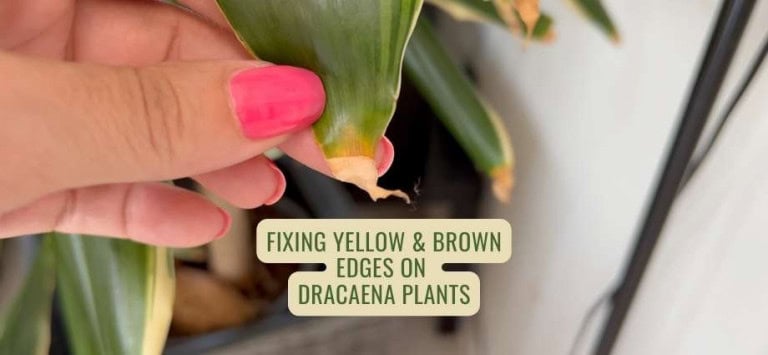Homemade Leaf Shine Recipe for Healthy Houseplants
Shiny, healthy leaves don’t just look beautiful – they’re a sign of a thriving plant. In today’s article, I’ll show you how to make my favorite Leaf Shine Recipe – a simple yet powerful formula for keeping your houseplants looking fresh, vibrant, and naturally glossy.
This homemade mix has been part of my plant care routine for years. It’s gentle, affordable, and uses only ingredients you probably already have in your kitchen. If you love clean, shiny leaves and want to avoid store-bought sprays full of chemicals, this guide is perfect for you.
If you prefer a visual walkthrough, you can watch my video below where I prepare and apply the Leaf Shine Recipe step by step:
Click here to watch the video on YouTube
Why Clean Leaves Matter
When you think about plant care, watering and light are usually the first things that come to mind. But there’s one essential step many people forget – cleaning the leaves.
Every day, dust and pollutants settle on your houseplants. Over time, this buildup blocks sunlight and clogs the tiny pores (stomata) plants use for breathing. Without enough light or air exchange, their energy drops and growth slows down.
By cleaning your leaves regularly, you help them:
- Absorb more sunlight for photosynthesis 🌞
- Exchange oxygen and carbon dioxide more efficiently
- Resist pests like spider mites and mealybugs
- Look healthier and more vibrant overall
Clean leaves are more than just beautiful – they’re vital for your plant’s well-being. Plus, who doesn’t love seeing that rich, glossy finish when sunlight hits your plant just right?

The Magic Mixture – Leaf Shine Recipe
Let’s move on to the fun part – making your very own Leaf Shine Recipe.
This formula has just three ingredients, but they work in perfect harmony. It cleans, nourishes, and protects your plants without leaving any sticky residue.
You’ll need:
- 200 ml full-fat milk – provides calcium and proteins that give a natural, silky shine.
- 5–10 ml olive oil – adds a glossy finish and helps repel dust and tiny pests.
- 5 ml white vinegar – gently dissolves mineral deposits and kills surface bacteria.
Each ingredient plays a special role: the milk feeds the leaf surface, the vinegar removes grime and hard water marks, and the olive oil locks in the shine.
🌿 Tip: Always use fresh, room-temperature ingredients so they blend evenly.

Step-by-Step Preparation for the Leaf Shine Recipe
- Measure and mix. Start with 200 ml of full-fat milk in a small bowl. Add 5 ml of white vinegar and then slowly pour in the olive oil.
- Blend gently. Stir the mixture with a spoon or small whisk until it’s uniform. Don’t worry if a few oil circles remain – that’s normal and harmless.
- Transfer and store. You can use the mixture directly from the bowl or pour it into a small spray bottle. Shake well before each use.
The texture should be smooth and slightly creamy, not too oily. If you notice separation, just shake or stir again before applying.
How to Use the Leaf Shine Recipe
Now that your mixture is ready, it’s time to put it to work!
- Choose a soft microfiber cloth or cotton pad. Avoid rough materials that could scratch delicate leaves.
- Dip and wipe. Soak the cloth lightly in your Leaf Shine Recipe, then wring out the excess. Support the leaf from below and wipe gently from stem to tip.
- Repeat on the underside. Many pests hide under leaves, so always clean both sides.
- Observe the transformation. You’ll notice a brighter, deeper green and a natural glow – no artificial sheen, just healthy radiance.
For heavily dusty leaves, you can give your plant a light shower first, then follow with the shine mixture once it’s mostly dry.
I usually apply this Leaf Shine Recipe about once every four weeks, or whenever I notice dullness. It’s safe, natural, and can be used throughout the year.
Which Plants Benefit the Most
This Leaf Shine Recipe works perfectly for plants with smooth, glossy foliage, including:
- Ficus elastica (Rubber Plant)
- Monstera deliciosa
- Philodendron species
- Pothos (Epipremnum aureum)
- Schefflera…
Avoid using it on plants with textured or velvety leaves, such as:
- Alocasia Black Velvet
- Calathea White Fusion
- African Violets
- Begonias with fine hairs
These plants have delicate surfaces that can trap moisture and develop spots when oiled.
🌿 Tip: Always test the mixture on one leaf first. If it looks fine after 24 hours, you can safely clean the rest of the plant.
Also, never reuse the same cloth on multiple plants – this prevents cross-contamination if one has pests or disease.

Storage & Safety Tips
Because the Leaf Shine Recipe contains milk, it doesn’t have a long shelf life. You can store it in the refrigerator for up to three days, but always allow it to reach room temperature and shake well before using again.
If you make a larger batch, label the bottle with the date so you know when to prepare a new one. Old mixtures can develop an unpleasant smell and lose their effectiveness.
Avoid direct sunlight on freshly cleaned leaves for at least a few hours. The oil could intensify the light and cause minor burns on very sensitive plants.
Combine With Other Natural Remedies
If you enjoy homemade plant care products, this Leaf Shine Recipe can be part of a broader natural routine.
For example, between cleanings, you can use a gentle Neem oil spray for pest prevention, or try my Homemade Lentil Fertilizer to encourage faster growth. These simple DIY formulas work beautifully together to create a healthy, chemical-free environment for your plants.
You can watch how I prepare my natural growth booster in the video below:
💬 Frequently Asked Questions About Leaf Shine Recipe
1. Can I use this recipe on all houseplants?
No. It’s ideal for glossy leaves but not for fuzzy or velvety ones. Always do a small patch test first.
2. Will the oil clog my plant’s pores?
Not if used sparingly. The ratio of milk and vinegar prevents buildup and helps the oil spread evenly.
3. How often should I clean the leaves?
Once a month is perfect. Over-cleaning can remove the natural protective layer of the leaf.
4. Can I replace olive oil with coconut oil?
It’s not recommended, coconut oil hardens at room temperature and can leave residue. Stick with olive or sunflower oil.
Final Thoughts on the Leaf Shine Recipe
Over the years, I’ve tested many commercial leaf shine sprays, but nothing beats this natural Leaf Shine Recipe. It’s safe, eco-friendly, and gives the kind of soft, healthy glow that synthetic sprays can’t replicate.
After just one cleaning, you’ll notice your plants look rejuvenated – as if they’ve taken a deep breath of fresh air. Their leaves will feel smoother, look greener, and photosynthesize more effectively.
If you try this Leaf Shine Recipe, I’d love to hear how your plants respond. Share your results or your own variations in the comments below – your ideas might inspire someone else in our growing plant community.
And if your houseplants are battling pests like mealybugs, check out my detailed guide:
👉 How to Get Rid of Mealybugs on Houseplants – Safe and Effective Method
Click here to watch the video on YouTube
Happy planting, and may your leaves always shine with natural beauty! 🌿
Explore More Music for Your Plants & Stay Connected!
Check out my Playlist: Music for Plants and find the perfect tunes to help your plants and yourself thrive.
Don’t forget to visit my YouTube Channel Plant House & Garden and subscribe — your support means the world to me!
Connect with me on social media for more plant care tips and music updates: Instagram | Facebook | X | Pinterest | Reddit | TikTok
Love plants? Love music? Don’t miss out on new updates — hit subscribe and follow now to keep your plants happy and your space vibrant!

